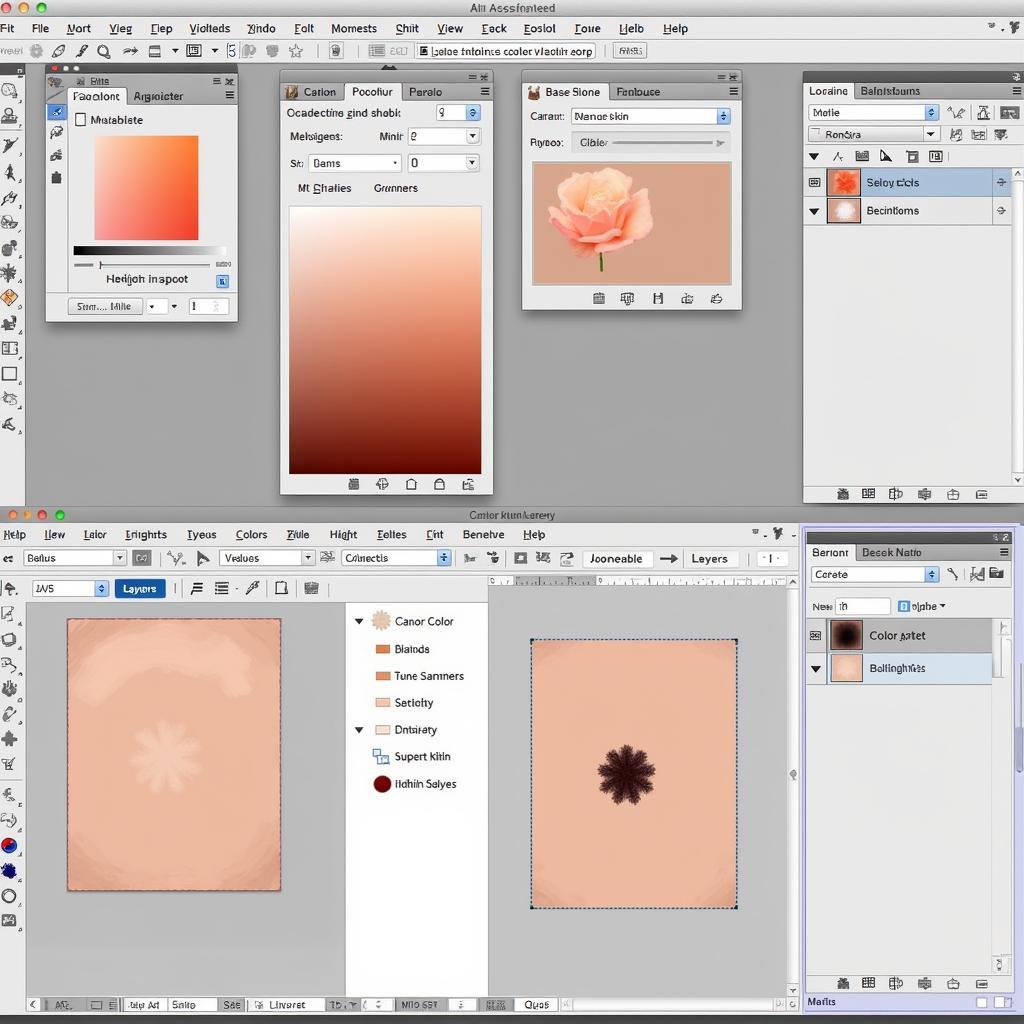Creating realistic skin tones is a fundamental skill for any artist, whether you’re painting portraits, sculpting figures, or designing characters. Matching the subtle nuances of human skin can be challenging, but with a little understanding of color theory and mixing techniques, you can achieve lifelike and captivating results. This guide explores various methods of how to make a skin tone color, covering different mediums and providing valuable insights for both beginners and experienced artists.
After this introductory paragraph, you might be interested in learning about how to make skin tone color paint.
Understanding the Complexities of Skin Tone
Skin tone isn’t just a single color; it’s a complex interplay of hues, values, and undertones. Factors like ethnicity, lighting conditions, and even individual genetics influence the final appearance of skin. To accurately recreate skin tone, you need to consider these elements. Observing real-life skin under different lighting conditions will greatly enhance your understanding and ability to mix accurate colors.
Mixing Skin Tones with Paint
Basic Skin Tone Recipe
A common starting point for mixing skin tones in paint involves a combination of white, yellow ochre, red, and a touch of blue or violet for coolness. The proportions of these colors will vary depending on the desired skin tone. For lighter skin tones, use more white and less of the other colors. For darker skin tones, increase the amounts of red, yellow ochre, and blue/violet while reducing the white.
Adjusting for Undertones
Undertones play a crucial role in realistic skin tone representation. Warm undertones lean towards yellow and gold, while cool undertones have hints of blue or pink. Adding a small amount of burnt sienna can enhance warmth, whereas a touch of ultramarine blue can create a cooler tone. Experiment with these adjustments to fine-tune your mixtures.
How to Make a Skin Tone with Colored Pencils
Layering Techniques
Creating skin tones with colored pencils requires a layering approach. Begin with lighter colors like cream or light peach and gradually build up the depth and complexity by layering darker shades like burnt ochre, sienna, and umber. Blending with a colorless blender pencil can soften the transitions between colors and create a smoother appearance.
Achieving Realistic Textures
To replicate the texture of skin, consider using different pencil strokes. Circular motions can create a soft, smooth effect, while short, hatched lines can add texture and dimension. Experiment with pressure and layering to capture the subtle variations in skin tone.
You can explore more specific techniques by checking out how to make a skin tone with colored pencils.
Digital Skin Tone Creation
Color Pickers and Swatches
Digital art programs offer a wide array of tools for creating skin tones. Color pickers allow you to select specific hues, saturation, and brightness values, while pre-made skin tone swatches can provide a convenient starting point. Experiment with different blending modes and opacity settings to achieve realistic results.
Utilizing Layers and Brushes
Similar to traditional mediums, layering is crucial in digital painting. Use separate layers for different elements like base color, shadows, and highlights. Experiment with different brush settings to create textures and achieve a natural look. For instance, a textured brush can mimic the subtle pores and imperfections of real skin.
 Creating Skin Tones Digitally Using Layers and Brushes
Creating Skin Tones Digitally Using Layers and Brushes
What Colors Make Skin Tone?
The core colors used to make skin tones are typically a combination of white, yellow, red, and blue or violet. However, the specific shades and proportions will vary depending on the desired skin tone and medium. This is covered more extensively in what colors make skin tone.
Conclusion
Mastering the art of how to make a skin tone color requires patience, practice, and careful observation. By understanding the underlying principles of color theory and applying various mixing and layering techniques, you can create realistic and expressive skin tones in any medium. Explore different approaches, experiment with various color combinations, and don’t be afraid to try new techniques to achieve your desired results.
You might find our guide on how to make light skin tone with colored pencils helpful. Remember, continuous learning and practice are key to improving your skills and capturing the beauty and complexity of human skin.
FAQ
- What are the basic colors for mixing skin tones?
- How do I adjust for warm and cool undertones?
- What is the best way to layer colored pencils for skin tones?
- What digital tools can help me create realistic skin tones?
- How can I achieve different skin textures using colored pencils?
- How does lighting affect the appearance of skin tone?
- What are some common mistakes to avoid when mixing skin tones?
For those interested in makeup, you might find this article helpful: how to pick makeup colors for your skin tone.
Need assistance? Contact us 24/7 at Phone: 0373298888, Email: [email protected] or visit us at 86 Cầu Giấy, Hanoi.
